A beautifully deep shade of purple drew my attention to the flowers of Bugle. A new spring roadside weed for me!
Spikes of deep purple stood less than a foot tall but the color was so vivid that the shade of the nearby trees didn’t hide these weeds growing by a two-lane road next to the creek.
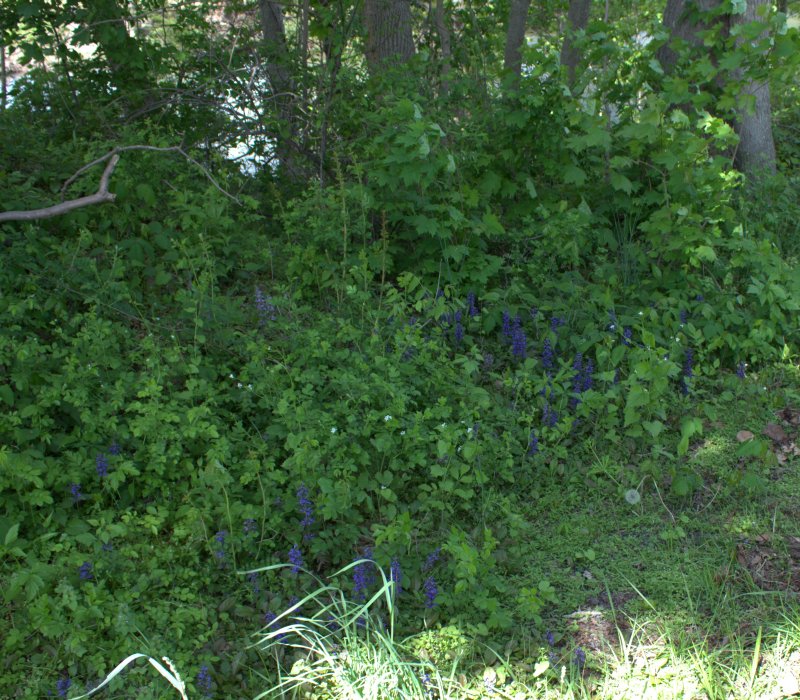
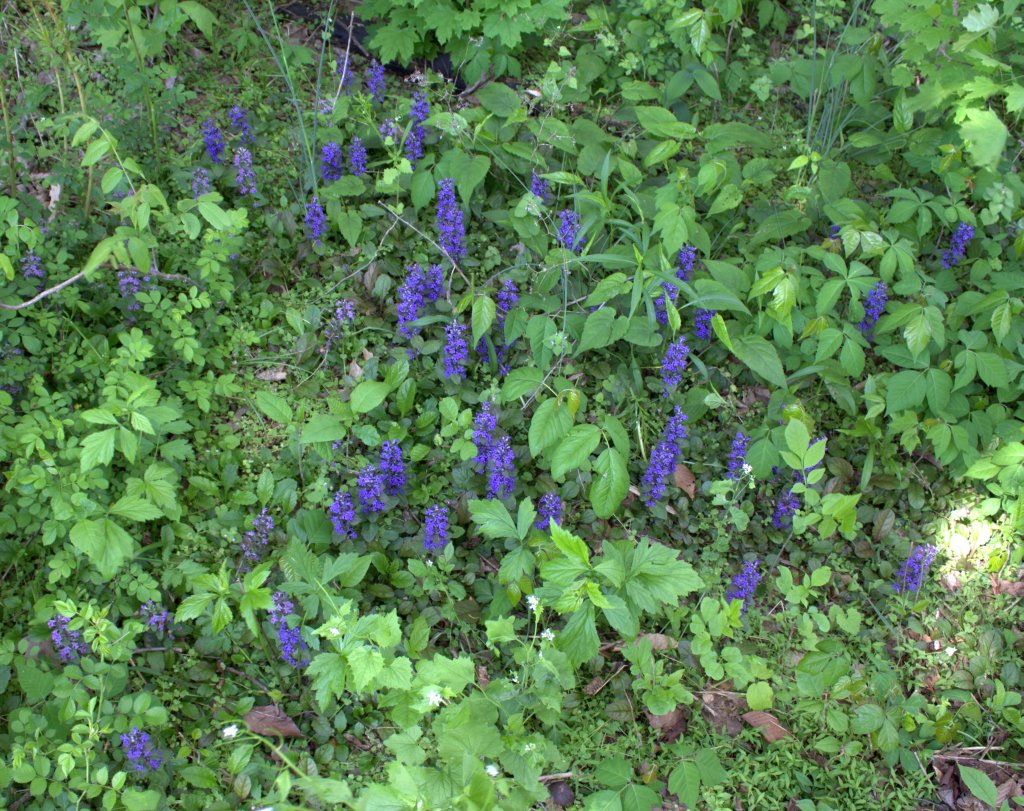
Bugle, Ajuga reptans, is alien to America and native to Europe, but you can find it growing wild in America along roadsides because it has escaped from gardens. Bugle’s tendency to form mats could make it an undesirable alien if not an invasive one.
Another common name for bugle is bugleweed, but that’s not to be confused with Bugleweed, Lycopus virginicus, a very different-looking herb native to North America that has some medicinal qualities.
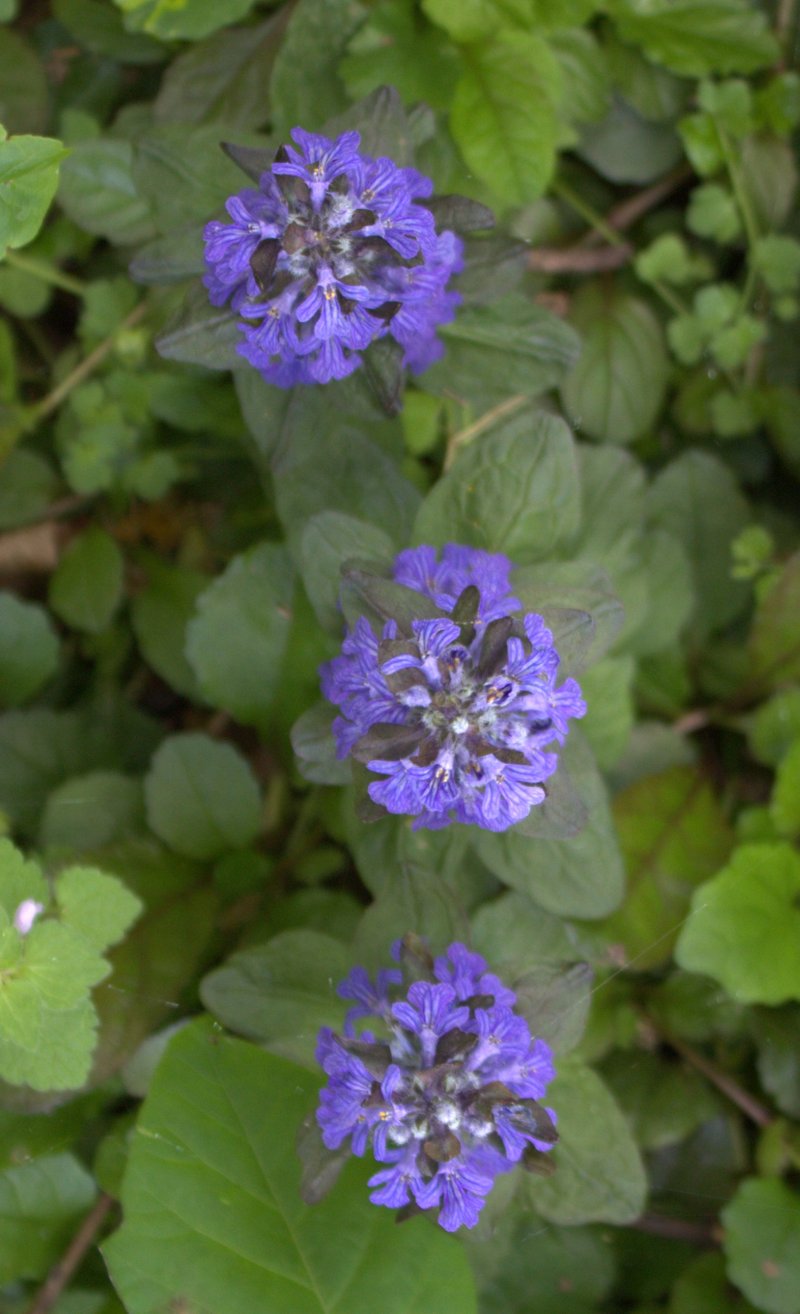
Several flowers grow in the leaf axils. Flower shape is tubular and the lower central lip is long and gracefully cleft.
The color isn’t violet or deep purple overall on the plant(s) pictured here, but rather made up of heavy lines of deep purple. Several garden varieties exist that have a range of colors from pink to deep blue.
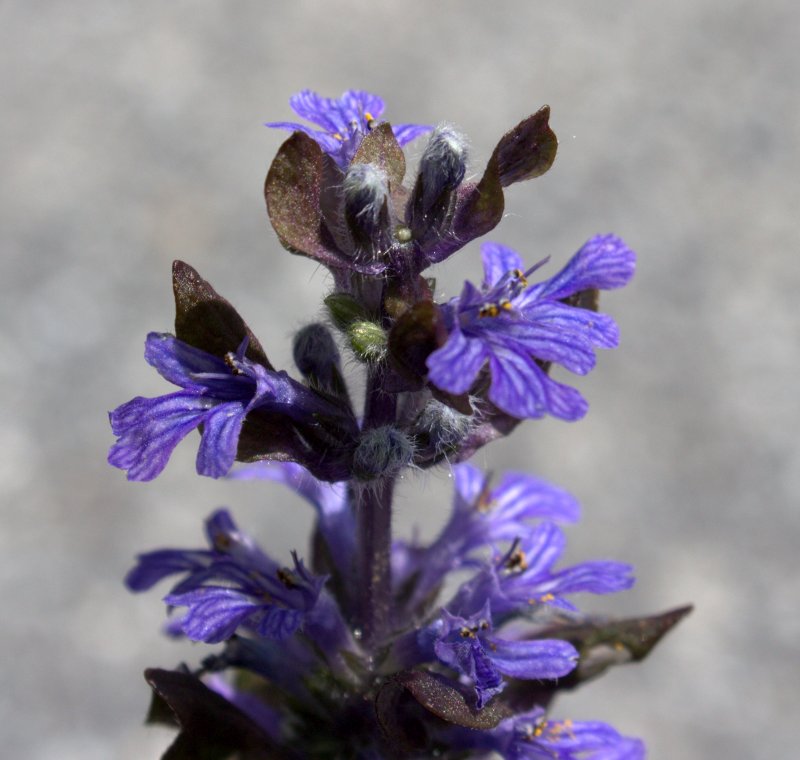
Newcomb’s Wildflower Guide would describe Bugle as a wildflower with opposite leaves that are toothed or lobed and having stalkless flowers that are not yellowish and that grow in spikes or whorls. To further describe Bugle one could add that Bugle bears medium-sized flowers about a half an inch long which have stamens that protrude beyond the upper lip of the irregular tube-shaped flower.
Leaves are fat oval shapes opposite to one another. Teeth on the leaves are few, very broad and flat and the upper leaves in the flower spike are practically devoid of them as to appear entire.
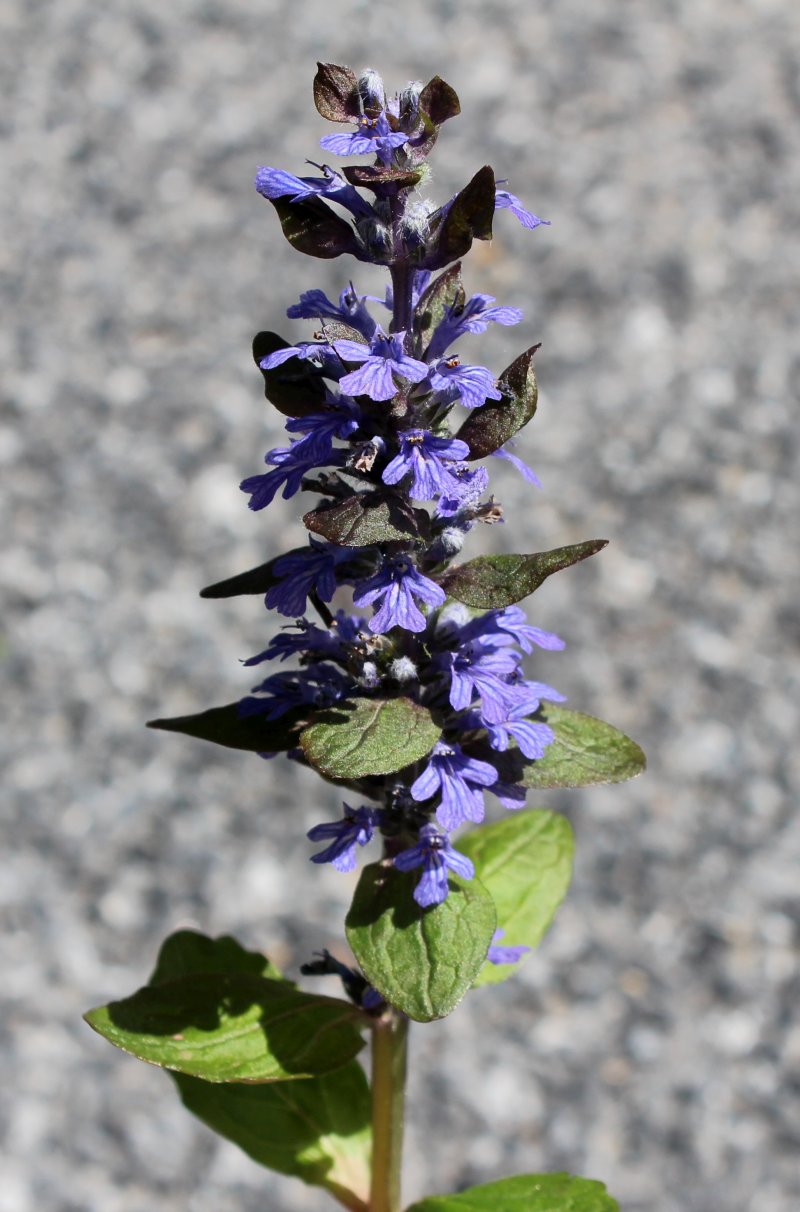
Photos taken 18 May 2014 in Perry County, Pennsylvania.